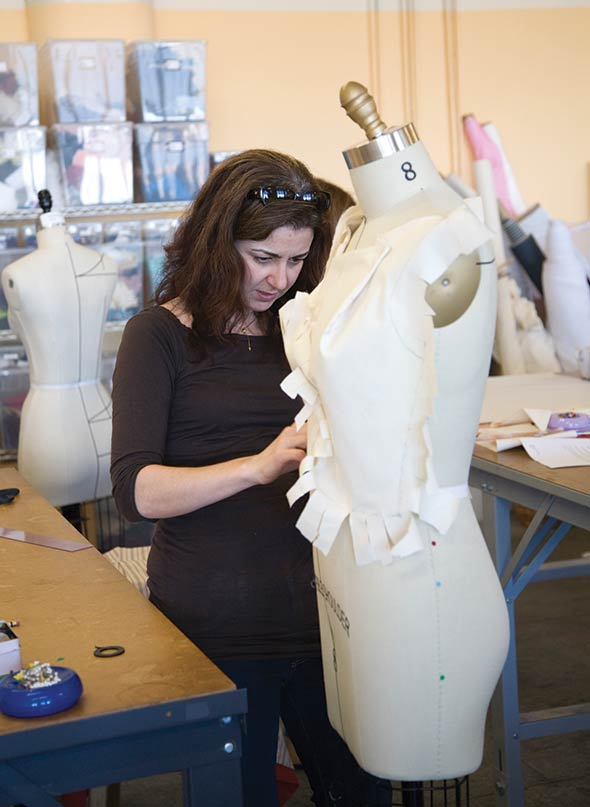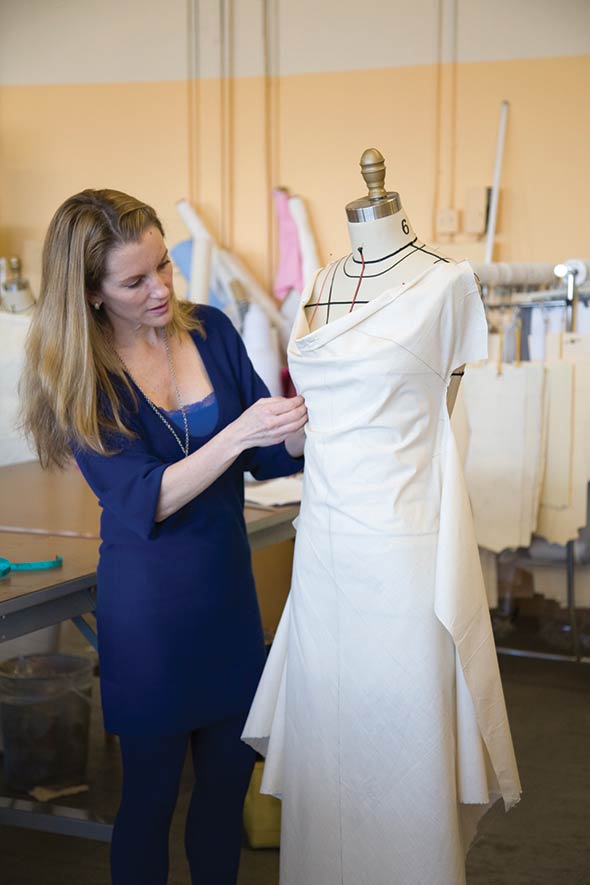Experts pertaining to varying confines of the fashion industry have gone back to school to study under clothing guru Simmin Sethna


The day Simmin Sethna left her family’s home in Calcutta for Paris, with dreams of mastering the ‘art of couture’, it seems unlikely that she foresaw the way in which she would inspire generations to come. Sethna attained her Master’s in Couture Pattern Drafting at the Ecole Guerre-Lavigne (now Esmod) in Paris around 1950, graduating second in her class, with a cache of masterfully designed clothing for ambassadors and socialite-type clients. With confidence and determination, she moved to San Francisco and started her own fashion school, The Simmin Sethna School of Fashion Design. There, from 1970 until the early ’90s, she trained droves of eager patternmaking students in ‘the French Couture way.’
Sethna’s exceptional talent integrated well with San Francisco’s natural tendency towards craft, quality, and eclectic local entrepreneurialism, creating the ultimate breeding ground for an American-West couture trend. The business of tailoring fine goods in San Francisco remained prosperous from the ’40s through the ’80s, before most garment manufacturing moved overseas, shuttering factories and leaving behind a surplus of talented seamstresses. However, many resilient San Franciscans continued to hone their skills, armed and ready for the city to shine once again as a tailoring mecca. These skilled clothiers set up their own custom sewing businesses from home, opened fashion retail co-ops, and taught.
Multi-talented fashion entrepreneurs such as Suzy Furrer, founder and director of Apparel Arts in San Francisco who has a font of knowledge for all things fashion, studied daily with Sethna for two years, learning the art, precision, and discipline of patternmaking. Furrer states, “I would not be anywhere in the fashion industry today without Simmin Sethna.” She started her own fashion design school in 1996, teaching patternmaking and design, illustration, draping, textiles, and business seminars, among other classes that rival Parsons The New School for Design and the Fashion Institute of Technology (FIT) in New York. Apparel Arts classes are unique in that they are individually paced and French tailoring-focused. Working quietly among students may be designers from large companies, such as Levi’s and The Gap, who have been sent to Apparel Arts to hone their skills. Furrer’s gem of a book, Building Patterns: The Architecture of Women’s Clothing, is an industry must-have. Her gift for teaching is undeniable, but it is her eye for fit that truly astounds; she can tell immediately when something is off by 1/8th of an inch, and her gentle suggestion to ‘drop the waistline a smidgen’ can instantly generate a leaner silhouette. It is here that aspiring designers learn to make patterns that they will cherish for a lifetime.
Kenneth King, an established custom couturier in his own right, with work on permanent display at the Prince Albert Museum in London and a client list that includes Elton John, also studied under Sethna for years. “Simmin Sethna had something that nobody else in the Bay Area had—exceptional training and a keen eye,” King fondly recalls, adding, “What I learned from her was the foundation of my career, it enabled me to make the kinds of work I saw in my head. She was a stern taskmaster, who knew her craft—this is a woman who ate, breathed, and lived for patternmaking. She taught anatomy as well as behavior of the fabric, [teaching me] that I would be dressing the mobile human form, not a wooden dress dummy, and all efforts were aimed at making sure that not only did the pattern look amazing, but that it actually fit and allowed the wearer to move and live in comfort.” Along with running a successful custom couture salon, King also teaches patternmaking at the Fashion Institute of Technology in New York, training the next generation of designers as Sethna had previously done for the generation before.
It has been more than 40 years since this couture cult icon sprinkled her expert fit magic upon Northern California, lending the tools and trade to bring to life any shape that a designer could envision. Many designers, teachers, manufacturers, and patternmakers have been linked to or influenced by Sethna in one way or another. Knowingly or not, it seems that Sethna, Furrer and other Apparel Arts instructors have laid the groundwork for an underground network of custom couture, one that is still flourishing in a city where innovative, one-of-a-kind pieces trump mass-produced goods. Quality can be addictive, and it is likely that once you have experienced a taste of custom fit, you will never willingly turn back.
Note: Sethna still lives in the Bay Area. Although no longer teaching, she manages to keep in touch with many of her former students.
TEXT BY Debra Winter
PHOTOGRAPHY BY Karima Cherif

